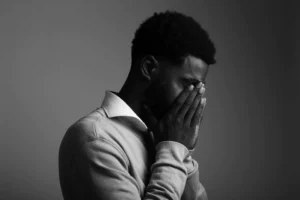In the early-to-mid 1990s, a feud between East and West Coast rappers escalated into violence and claimed the lives of, among others, Tupac Shakur and The Notorious B.I.G. The conflict, in keeping with its surreal quality, only came to an end after the mediation of Nation of Islam leader, Louis Farrakhan.
A decade later, another East Coast-West Coast feud is brewing and although the only likely casualties this time around are feelings, it’s every bit as ludicrous as the last one.
A recent issue of LA Weekly informed readers that we’re in the midst of a “battle over who has earned the right to call themselves a dandy.” “Dandy,” as in “a man who places particular importance upon physical appearance, refined language, and the cultivation of leisurely hobbies.” As in the Scarlet Pimpernel.
Who knew that there were still honest-to-goodness dandies around, much less a war between the various factions? But, yes, soi-disant (French is de rigueur among some dandies) “orthodox dandies” based on the West Coast are waging rhetorical battle against East Coast “Oscar Wilde introverted, willowy, pale art types” whom they see as little more than poseurs.
West Coast dandies like Christian Chensvold want to “give dandy back its shot of testosterone” and rescue it from the likes of writer Tom Wolfe, the exemplary East Coast dandy, with his “white suit, walking stick and affected airs.” For Chensvold and company, “dandies should also be sportsmen and social types” and “engaged in the real world” instead of dressing anachronistically.
Writer Michael Brendan Dougherty (The American Conservative), whose blog, “Surfeited With Dainties,” has a recurring featured entitled “Be The Man,” sides with the West Coasters in this tong war: “Dandyism has been hijacked by crude anti-bourgeois poseurs, fake romantics and deeply confused men of an effeminate type.”
While Dougherty applauds the East Coasters’ rebellion “against sartorial shabbiness,” he adds that “they also step over the line from well dressed to costumed.” His “litmus test” for distinguishing a true dandy from a “heretical one” is (no pun intended) straightforward: “If you can describe someone as ‘prancing,’ you are talking about a heretical dandy. If he is ‘dashing,’ you may have the real thing.”
From my vantage point, they all look “costumed.” It’s true that the leader of the East Coast faction looks like a cross between a chubby elf and the “Yodeling Veterinarian of the Alps” from Veggie Tales. Then again, the picture of Chensvold makes him look like a clone of the assassin, played by Edward Fox, in the original “Day of the Jackal,” down to the clothes and the car.
Then there’s the idea of a “male archetype,” to use Chensvold’s phrase, drawing its inspiration from Beau Brummel. While Brummel may have been the “arbiter of fashion” in early nineteenth century England and is “credited with introducing and bringing to fashion the modern man’s suit worn with necktie,” he also may have been the most useless man in all of Christendom, a real-life Harold Skimpole (from Dickens’ Bleak House): he quit the military rather than accept a posting to unfashionable Manchester and fled England to avoid paying his debts to tradesmen, i.e., men who worked for a living, before eventually dying from syphilis.
Hardly the stuff of a suitable — or, at least, honorable — male archetype. Then again, modern dandyism is only one of many behaviors and fads that attempt to answer, or at least provide an answer, to the question “what does it mean to be a man?”
The obvious answer, biology, with its binary male and female, XY and XX, no longer suffices. Partly because being a man was always about more (but not less) than biology but also because a significant part of our cultural moods involve a denial of — or at least a rebellion against — the restraints and limitations imposed by nature.
(Case in point: a recent decision by the New York City Board of Health allowing “people born in the city … to change the documented sex on their birth certificates.” People who have undergone “sexual re-assignment surgery” can already do this. The new rule is directed at those who haven’t undergone the surgery but who have “lived in their adopted gender for at least two years …” and can provide “affidavits from a doctor and a mental health professional laying out why their patients should be considered members of the opposite sex.”
This is, to borrow a phrase from justice Clarence Thomas, “uncommonly silly.” “Living as a woman” can no more make me — or anyone else — a woman than dressing in green tights and wearing a pointed hat would make me one of Santa’s elves.)
Denying or downplaying the essential differences between men and women doesn’t eliminate our awareness that there are differences and our need to understand them — it simply makes it more likely that we will look for the answers in the wrong places. These “wrong places” include defining manhood in terms of certain behaviors that conform to either particular male characteristics or, in the case here, a specific “male archetype.”
I wrote about some of these behaviors in an old Boundless piece, which discussed how the sexual irresponsibility and hyper-aggressiveness of some athletes was wrongly depicted as representing a kind of elemental masculinity — a textbook example of the “soft bigotry of low expectations.”
There’s no shortage of other examples: limiting ourselves to the past 10-15 years we have the cigar fad, the poker craze, the popularity and acceptance of strip clubs, and the replacement of boxing by “Ultimate Fighting.” What these disparate things have in common is that the core behaviors are traditionally associated with males. A large part of what drives these fads and crazes is the desire of men to differentiate themselves from the women in their lives in more-or-less socially-acceptable ways.
By “socially-acceptable” I mean ways that don’t threaten the cultural dogma that sees men and women as essentially (in the Aristotelian sense) interchangeable. Smoking a Monte Cristo, sweating an inside straight and even stuffing dollar bills inside a stripper’s G-string don’t challenge that dogma — they reinforce it. They substitute letting “boys be boys” for an honest exploration of what it means to be a man. These behaviors are literally superficial and every bit as much a costume as anything worn by the combatants in the dandy wars.
If these are the wrong places to look for answers, then where is the right place? In a word, home. Discussions about what it means to be man (at least in Christian and social-conservative circles) usually wind up blaming “feminists” for the problem, which confuses an effect for the cause or at least a cause.
Historian Allan Carlson has written about how the Industrial Revolution replaced a “function-rich family” with a “nearly-functionless” one. Whereas, previously, family members depended on one another for nearly everything, they now “needed each other much less than before.”
The first to experience the sense of being “an individual, standing alone” were men who were the first to work outside the home. In effect, they traded being a man for being a worker and consumer. (If this all sounds a bit, well, Marxist, you know what they say about stopped clocks. Seriously, this critique is by no means uniquely Marxist.)
Not only were men the first to experience this alienation, their experience was the most complete and the most debilitating. Their wives (even those who eventually worked outside the home) and children retained a greater connection to their homes than men did — think of the familiar complaint that “dad is never at home.” This alienation cut men off from their primary source of understanding into what it means to be a man.
Stated differently, it’s primarily within the context of our families that men learn what it means to be a man. The popular archetypes the are invoked today — warrior, mammoth hunter, man of leisure, etc. — have, throughout recorded history, only represented a small fraction of men, even before the rise of Christianity. In some important respects, the story of civilization is the story of how, to borrow a phrase you may be familiar with, men’s hearts were turned towards home and how character traits such as courage, strength, and bearing up under adversity were put to the service of their families and neighbors.
When I speak of “alienation,” I don’t mean that the traditional way of understanding what it means to be a man is no longer available to males — it is — but, instead, that it is no longer the default. If anything, home life is seen an impediment to that understanding which leaves men few option besides embracing alternatives which are often little more than caricatures or quoting Sun Tzu’s “The Art of War” at work.
Since the relationship between manhood and home is no longer the default, men have to be intentional about, well, cultivating the link. It’s hard, especially because our materialistic monoculture pulls us away from home, not towards it, but it’s one kind of cultivation that won’t leave you looking ludicrous.
Copyright 2006 Roberto Rivera y Carlo. All rights reserved.










